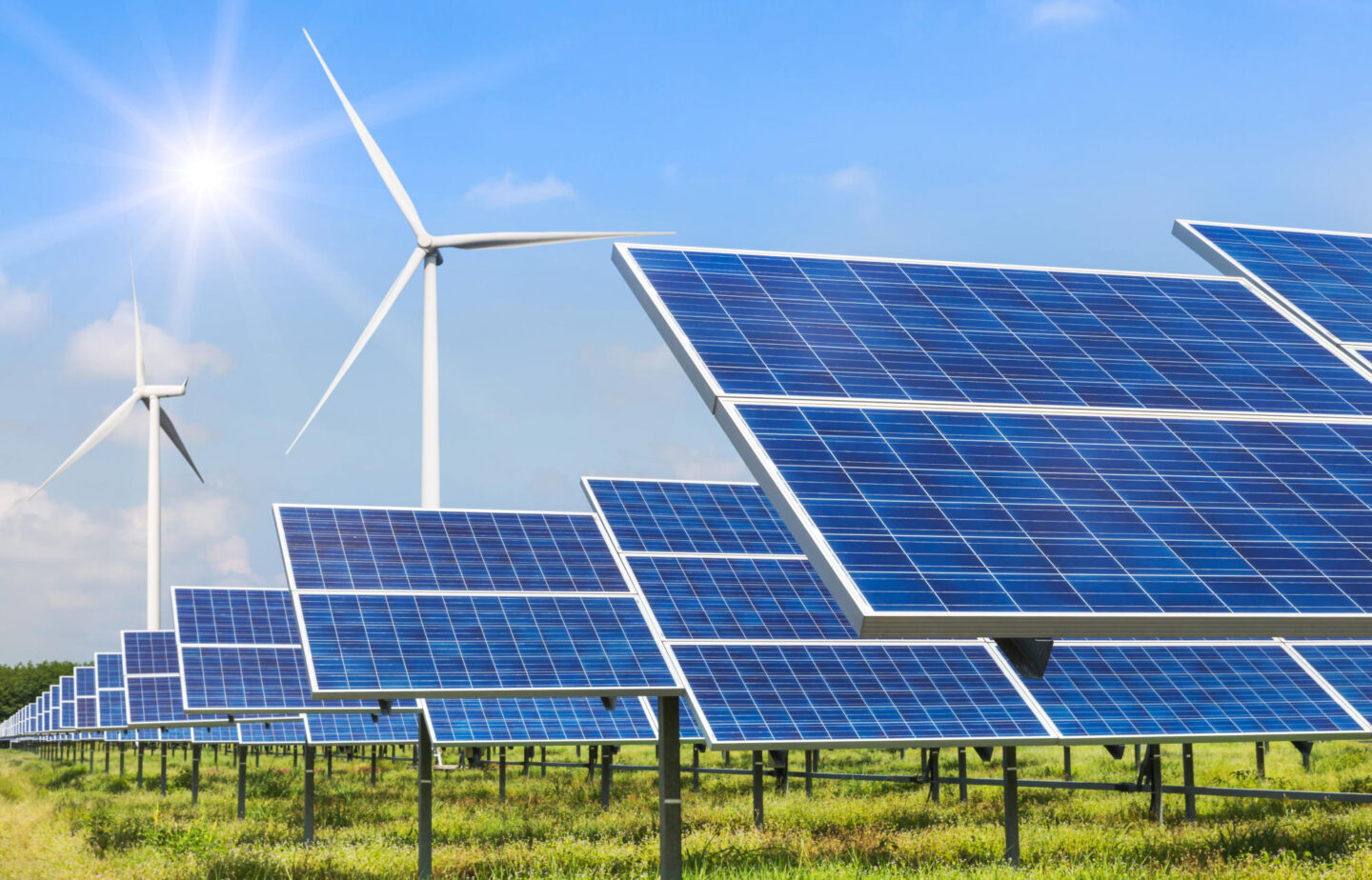
How to manage power dynamics in high-stakes negotiations
Former FBI agent Joe Navarro explains how to leverage non-verbal cues, manage power dynamics, and build trust to overcome deadlocks in negotiations....

by Mark J. Greeven, Sophie Liu Published February 28, 2025 in Competitiveness • 9 min read
The initiative’s ambitious targets covered 10 key industries, including robotics, aerospace, and biopharmaceuticals, aiming for 70% domestic production of core components by 2025.
Launched in 2015, “Made in China 2025” (MIC2025) is a decade-long plan designed to transition China’s manufacturing sector from low-cost production to a hub of innovation, quality, and technological leadership. Despite the country’s dominance in manufacturing output – surpassing the US in 2010 and maintaining the lead for five consecutive years – China had historically occupied the lower echelons of the global value chain, characterized by cost competitiveness rather than technological sophistication. In high-tech and advanced manufacturing, the gap between China and developed nations was particularly pronounced.
Recognizing this disparity, the Chinese State Council unveiled the MIC2025 initiative in August 2015. The initiative’s ambitious targets covered 10 key industries, including robotics, aerospace, and biopharmaceuticals, aiming for 70% domestic production of core components by 2025. Beyond self-reliance, MIC2025 sought to bolster innovation, enhance labor productivity, and promote sustainable green development, positioning China as a leader in the global manufacturing landscape.
Upon introduction, MIC2025 was initially perceived as a threat and met with skepticism by Western analysts who deemed it overly ambitious. Over time, skeptics began referring to it as a failed or ineffective strategy. Yet, in 2024, the South China Morning Post reported that China has met or exceeded over 86% of the 200+ objectives outlined in the initiative’s 10 key areas, with some targets significantly surpassing expectations.

“New Energy Vehicles (NEVs) and renewable energy surged, with NEVs surpassing a 50% penetration rate in China by 2024. In wind and solar power, key players like Goldwind, LONGi, and JinkoSolar have emerged as global leaders.”
The achievements in some of these key sectors highlight the systemic transformation of China into a powerhouse of manufacturing innovation.
External pressures including tariffs, export bans, and trade policies were originally intended to slow China’s technological rise. Key among these was the Trump administration’s focus on curbing firms like Huawei and SMIC, which created urgency for self-reliance and innovation. In response, China doubled down on domestic innovation to develop its capabilities across critical sectors.

Foreign companies are also increasingly leaning on the Chinese innovations that have resulted from the MIC2025 objectives, fostering a globally interconnected ecosystem of co-innovation. One notable example is Toyota and BYD’s partnership, which is focused on researching and developing battery electric vehicles, combining BYD’s strengths in EV development and competitiveness with Toyota’s quality and safety technology. This has resulted in the launch of vehicles like the Toyota b23 EV in China, which utilizes BYD’s battery technology, underscoring how global automakers are benefiting from domestic expertise in China to strengthen their product offerings. Similarly, FUCHS, a global leader in lubricants, has leveraged China’s innovation ecosystem as part of its global strategy. By fostering cross-functional collaboration and empowering local teams to drive product innovation, FUCHS has successfully tapped into Chinese market insights and expertise, driving global competitiveness and enhancing their agility in a fragmented world.
The pharmaceutical industry also stands as a testament to the deepening collaboration between global enterprises and Chinese innovation under MIC2025. While Western pharma giants have invested in local R&D and decades, they are now actively pursuing the licensing of drugs created by Chinese biotech firms. In just a few years, the number of pharmaceutical transactions worth over $50m involving China jumped from 0% in 2019 to 31% in 2024. This trend is underscored by high-profile collaborations like Merck’s $3.3bn cancer drug deal with China-based LaNova, and AstraZeneca’s acquisition of Gracell Biotechnologies for up to $1.2bn, marking the first acquisition of a Chinese life sciences company by an overseas multinational. These symbiotic relationships exemplify the objectives of MIC2025, fostering an environment where international collaboration and domestic innovation drive mutual growth and industry leadership.
DeepSeek’s development is emblematic of China’s broader advancements in AI, aligned with MIC2025’s focus on next-generation IT.
DeepSeek, China’s answer to OpenAI’s ChatGPT shocked global tech circles with its rapid deployment, seemingly emerging against the odds in a constrained AI landscape shaped by restrictions and geopolitical tensions. More than a technological breakthrough, it is a testament to China’s ability to foster bold innovation, even from relatively young startups, highlighting the ingenuity and problem-solving mindset that enables Chinese tech firms to navigate challenges and push the boundaries of AI.
DeepSeek’s development is emblematic of China’s broader advancements in AI, aligned with MIC2025’s focus on next-generation IT. It reflects progress in industrial automation, natural language processing, and AI-driven medical diagnostics. Companies like Baidu, Alibaba, and Tencent have each advanced China’s AI ecosystems in distinct ways – Baidu in autonomous driving, Alibaba with AI-driven healthcare and new large language model Qwen, and Tencent with medical AI solutions – underlining the diversification of China’s AI efforts.
The implications of DeepSeek extend globally. Domestically, such advancements are transforming industries from e-commerce to manufacturing. Internationally, they challenge existing paradigms of AI leadership, positioning China as not just a competitor but a potential standard-setter in emerging technologies.
While China has made substantial strides in robotics, industrial automation, and aerospace, the country remains highly dependent on imported high-end machine tools to meet the demand for advanced technology and specialized equipment.
Despite the significant achievements and innovations across various industries, critical challenges remain in key areas. One of the biggest hurdles lies in semiconductors, a sector that remains a chokepoint for China. Despite heavy investment in domestic chip manufacturing, China still lags behind global leaders like TSMC and Intel in the production of 5nm and 3nm chips. US export restrictions on advanced semiconductor equipment have further slowed China’s progress, forcing companies like Huawei to develop workarounds that, while impressive, still fall short of top-tier international standards.
The high-end manufacturing gap is another key obstacle. While China has made substantial strides in robotics, industrial automation, and aerospace, the country remains highly dependent on imported high-end machine tools to meet the demand for advanced technology and specialized equipment. Key industries, including aviation and medical technology, rely on foreign suppliers for specialized equipment, which presents challenges to achieving full self-sufficiency in critical sectors.
China’s green energy ambitions also face scalability challenges. The country is the world’s biggest producer of renewable energy, leading in the production of solar panels, wind power, and battery technology, but also the world’s biggest carbon emitter relying heavily on coal-fired power plants to meet its growing energy demands. According to data released by China’s National Energy Administration, while thermal power accounted for only 12.62% of newly installed capacity in 2024, its absolute installed capacity has remained at a relatively high level in recent years. This duality poses a significant challenge to China’s long-term energy transition and sustainability goals.
It stands as a testament to China’s resilience and strategic foresight, driving a profound transformation in its manufacturing sector through innovation, self-reliance, and sustainability.
The Made in China 2025 initiative represents more than a policy framework; it embodies the long-term strategic vision to position China as a global leader in manufacturing. With intentionally ambitious targets, the initiative aims to push the boundaries of innovation and industrial capabilities. Even partial success in achieving these goals would mark a significant milestone for any nation, and China’s progress to date underscores its commitment to this transformative agenda. However, these achievements are not the culmination of this vision but rather the foundation for the next phase of development, extending to 2035 and beyond.
The initiative’s impact transcends national borders, advancing global progress in high-speed rail, renewable energy, and solar power. As China continues its journey toward becoming a global manufacturing powerhouse, its contributions to sustainable development and technological innovation will shape the global economy, offering opportunities for collaboration and shared growth.
It stands as a testament to China’s resilience and strategic foresight, driving a profound transformation in its manufacturing sector through innovation, self-reliance, and sustainability. While challenges remain, the progress achieved so far highlights the ingenuity and entrepreneurial DNA of Chinese companies and suggests a new phase of global competition. For business leaders and executives, the imperative is clear – to engage with China’s innovation engine and leverage opportunities for collaboration and growth in China’s burgeoning industrial ecosystem.

Professor of Management Innovation, Dean of IMD Asia, Chief Executive of IMD China
Mark Greeven is Professor of Management Innovation and Strategy and Dean of Asia at IMD, where he co-directs the Building Digital Ecosystems program and the Strategy for Future Readiness program. Drawing on two decades of experience in research, teaching, and consulting in China, he explores how to organize innovation in a turbulent world. Greeven is responsible for the school’s activities and outreach across China and is a founding member of the Business Ecosystem Alliance. He is ranked on the 2023 Thinkers50 list of global management thinkers.

Research Associate, IMD China
Sophie Liu is a Research Associate at IMD China. Her work focuses on business and company transformation within China’s dynamic market landscape, as well as the development of Generative AI in the region, with a particular emphasis on the Asian market. Sophie holds a Master of Science in Finance from the Chinese University of Hong Kong and a Bachelor’s degree in engineering from the National University of Singapore. Prior to joining IMD, she gained valuable experience in equity investment in Hong Kong and the banking industry in Singapore, bringing a well-rounded perspective to her research.

May 6, 2025 • by Anna Cajot in Competitiveness
Former FBI agent Joe Navarro explains how to leverage non-verbal cues, manage power dynamics, and build trust to overcome deadlocks in negotiations....

April 24, 2025 • by Jerry Davis in Competitiveness
Many regional developers have tried and failed to emulate Silicon Valley’s VC-driven model for innovation. Detroit, the birthplace of Ford, is following an alternative route – with promising results....
 Audio available
Audio available
April 16, 2025 • by Benoit F. Leleux in Competitiveness
How a private equity-backed corporate carve-out created a successful, sustainable consulting powerhouse...

April 11, 2025 • by Jim Pulcrano, Jung Eung Park, Christian Rangen in Competitiveness
Founders searching for funding must be targeted in their approach to securing a lead investor. A global survey of VCs offers valuable insights into what makes them tick....
Explore first person business intelligence from top minds curated for a global executive audience